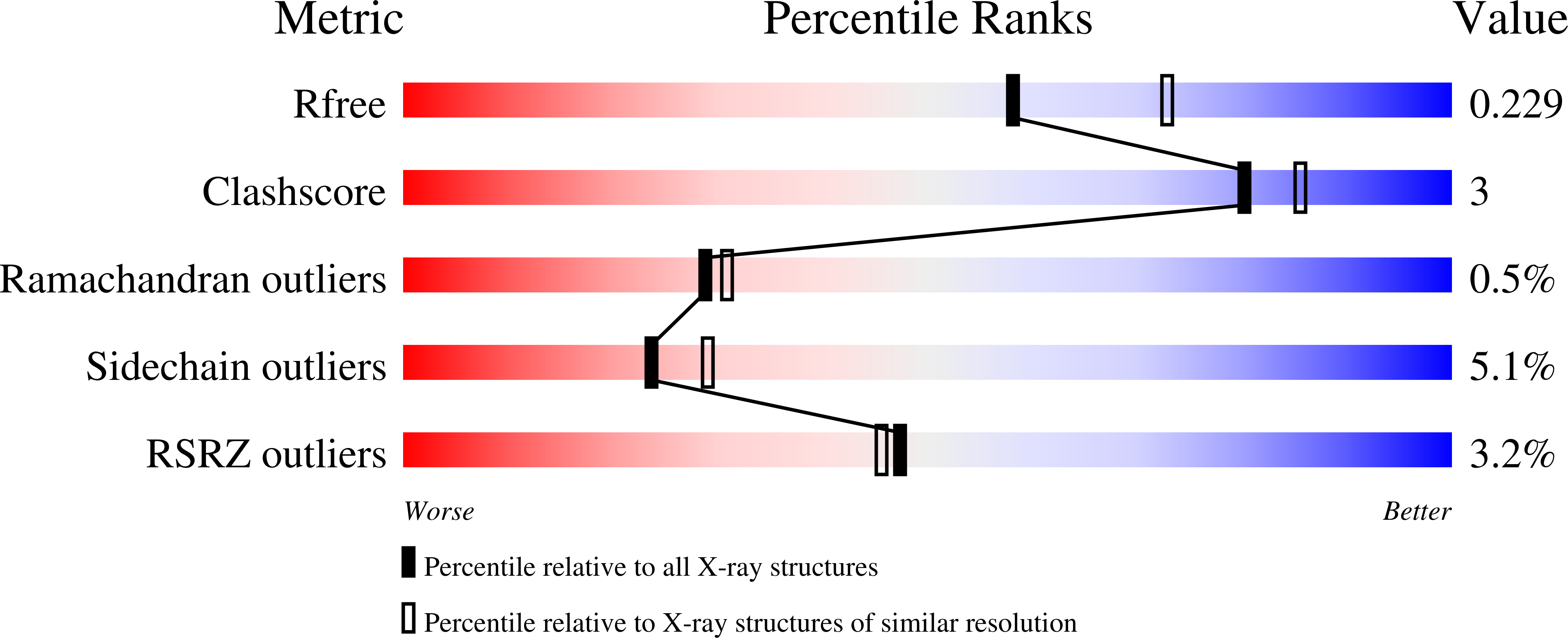3C Protease of Enterovirus 68: Structure-Based Design of Michael Acceptor Inhibitors and Their Broad-Spectrum Antiviral Effects Against Picornaviruses.
Tan, J., George, S., Kusov, Y., Perbandt, M., Anemuller, S., Mesters, J.R., Norder, H., Coutard, B., Lacroix, C., Leyssen, P., Neyts, J., Hilgenfeld, R.(2013) J Virol 87: 4339
- PubMed: 23388726
- DOI: https://doi.org/10.1128/JVI.01123-12
- Primary Citation of Related Structures:
3ZV8, 3ZV9, 3ZVA, 3ZVB, 3ZVC, 3ZVD, 3ZVE, 3ZVF, 3ZVG - PubMed Abstract:
We have determined the cleavage specificity and the crystal structure of the 3C protease of enterovirus 68 (EV68 3C(pro)). The protease exhibits a typical chymotrypsin fold with a Cys...His...Glu catalytic triad; its three-dimensional structure is closely related to that of the 3C(pro) of rhinovirus 2, as well as to that of poliovirus. The phylogenetic position of the EV68 3C(pro) between the corresponding enzymes of rhinoviruses on the one hand and classical enteroviruses on the other prompted us to use the crystal structure for the design of irreversible inhibitors, with the goal of discovering broad-spectrum antiviral compounds. We synthesized a series of peptidic α,β-unsaturated ethyl esters of increasing length and for each inhibitor candidate, we determined a crystal structure of its complex with the EV68 3C(pro), which served as the basis for the next design round. To exhibit inhibitory activity, compounds must span at least P3 to P1'; the most potent inhibitors comprise P4 to P1'. Inhibitory activities were found against the purified 3C protease of EV68, as well as with replicons for poliovirus and EV71 (50% effective concentration [EC(50)] = 0.5 μM for the best compound). Antiviral activities were determined using cell cultures infected with EV71, poliovirus, echovirus 11, and various rhinovirus serotypes. The most potent inhibitor, SG85, exhibited activity with EC(50)s of ≈180 nM against EV71 and ≈60 nM against human rhinovirus 14 in a live virus-cell-based assay. Even the shorter SG75, spanning only P3 to P1', displayed significant activity (EC(50) = 2 to 5 μM) against various rhinoviruses.
Organizational Affiliation:
Institute of Biochemistry, Center for Structural and Cell Biology in Medicine, University of Lübeck, Lübeck, Germany.















